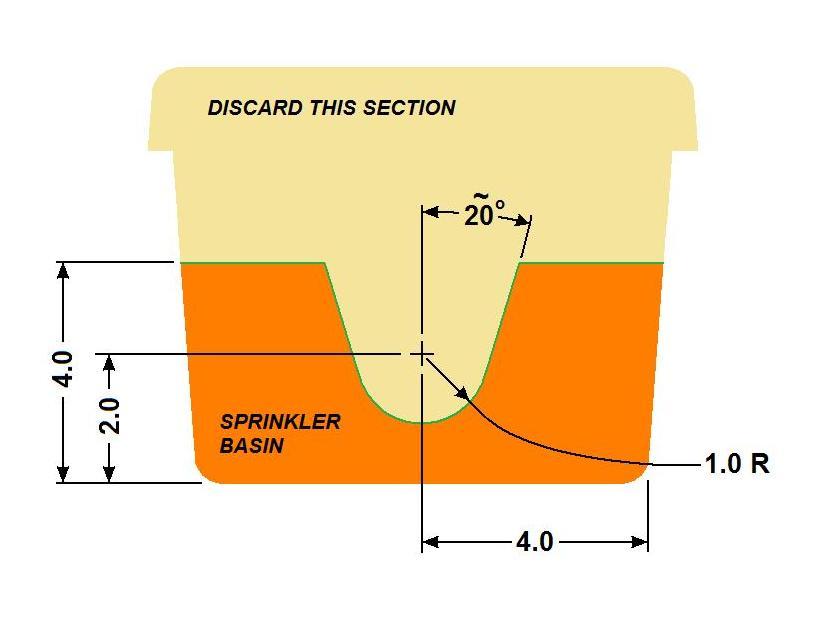In our prior house I patiently installed dozens of popup sprinkler heads all over my garden at a cost of a few hundred dollars and several days of work. When my wife and I moved into our new house I decided to take a more calculated (lazy) approach. I found a way to cut the cost in half, make the job easier, and keep it all hidden from view. Here’s the scoop.
My garden is a mix of rectangular areas and it takes a number of partial-sweep sprinkler heads to get full coverage, whereas a single oscillating sprinkler can be adjusted to cover the entire rectangle. But I didn’t want to leave these green-and-yellow sprinkler monstrosities scattered around our beautiful garden all of the time. So I came up with a plan: I put the sprinklers underneath the walkway. Now when I want to water the garden I just flip over a few pavers and the turn on the sprinkler system at the hose bib. It’s easy, cheap, and totally out-of-sight when not in use.
Each subterranean unit is built from the base of a plastic toolbox you can buy at your local building supply store for less than ten dollars. Decide where you want to place the sprinklers, generally under your garden walkway, but some can be in locations where you want to add a lone paver as a steppingstone. Each sprinkler can cover a rectangular area that is over 50 feet long and 50 feet wide.












